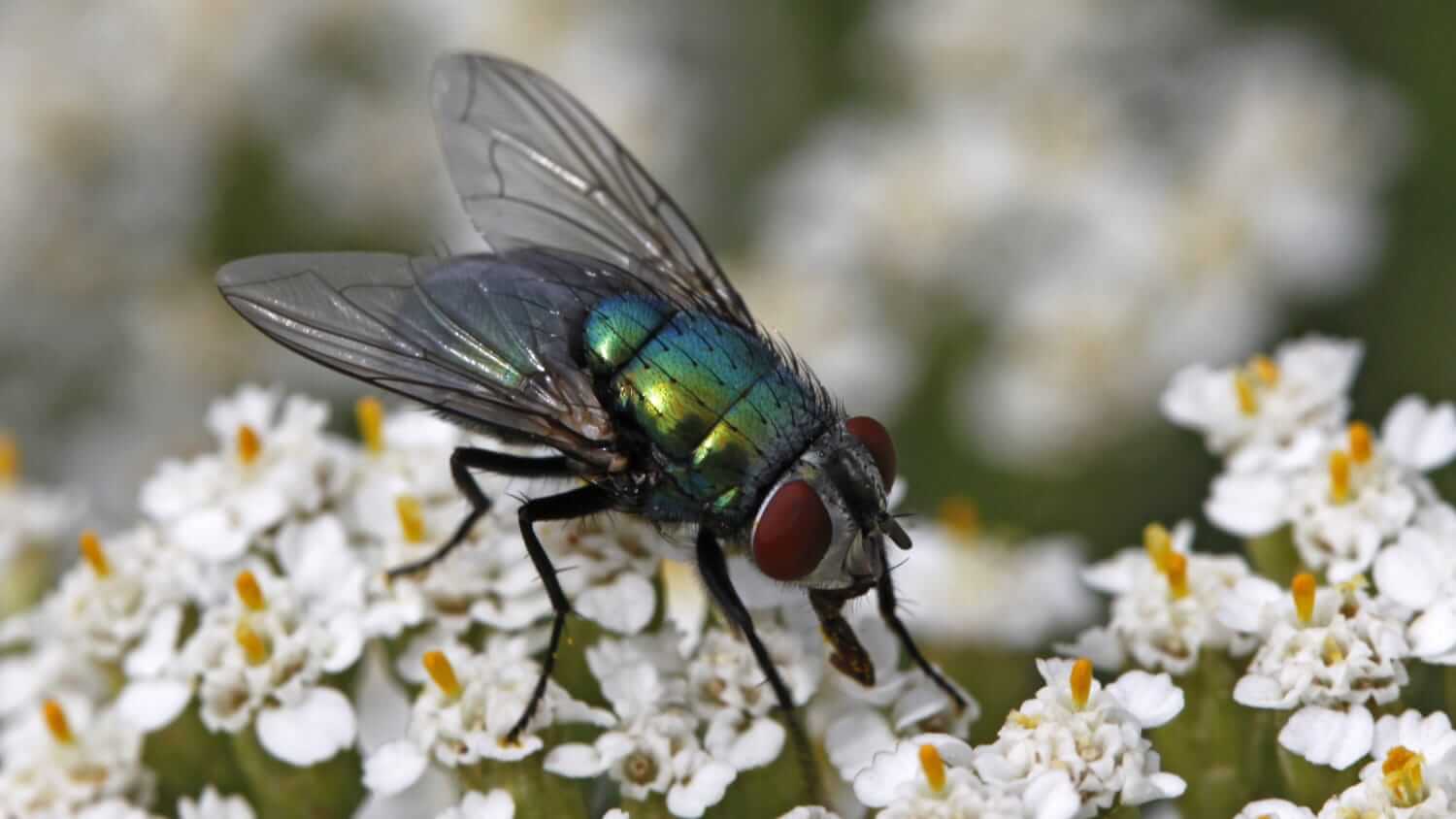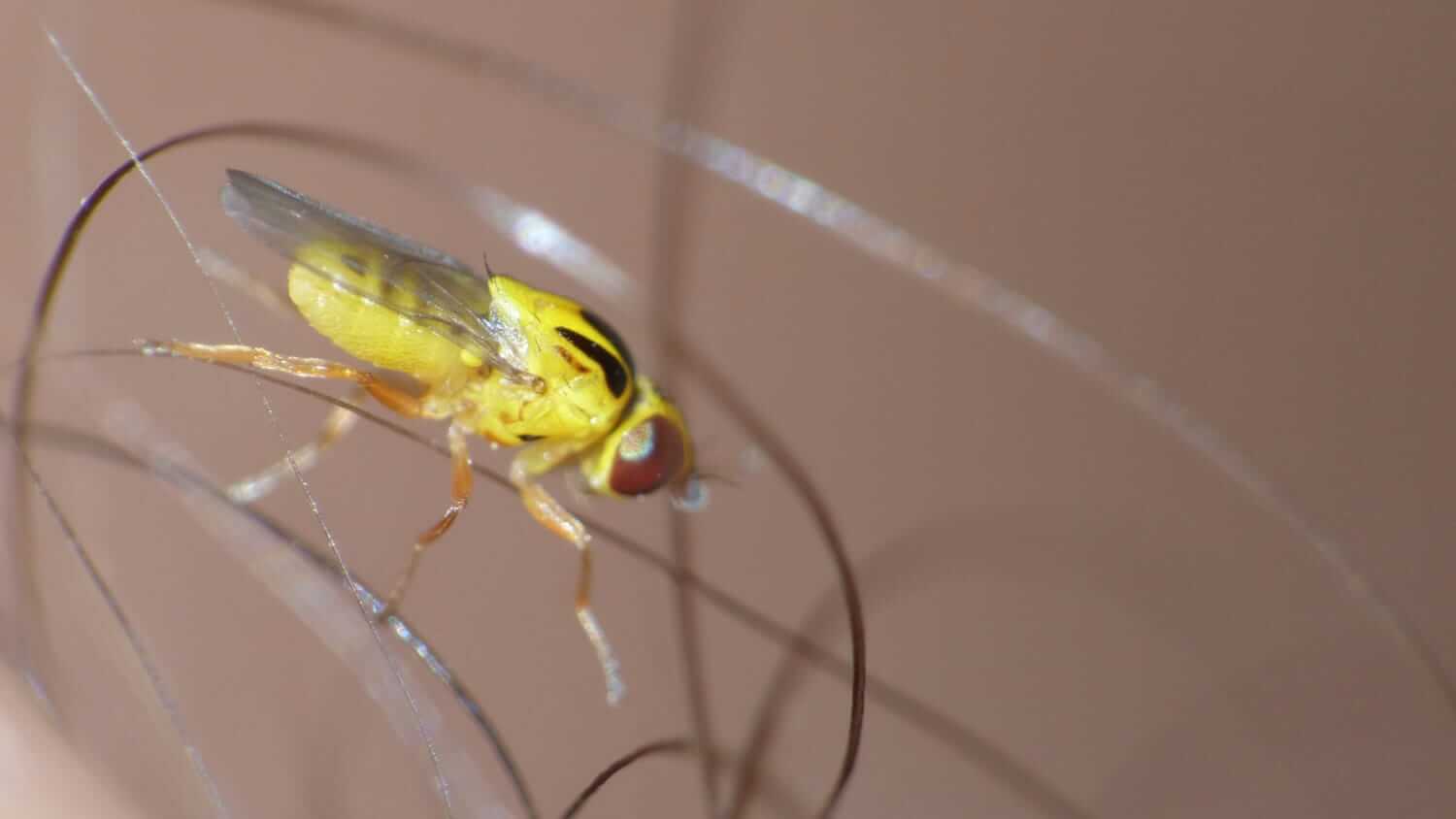Flies Pest Control
Fly Control in Poole, Bournemouth and the surrounding areas.
BMS Pest Control offers a fast, effective and professional service at affordable prices to rid your home or business of flies.
Our treatments are safe, clean and are carried out at a time that is convenient to you. We will be happy to answer any questions you may have and to offer help and advice.
The Need to Control Flies
Depending on the species in question, Flies can either be a nuisance or a serious health hazard. House Flies and Blow Flies are known carriers of a wide range of diseases, which they can spread by landing of food and preparation surfaces.
While generally harmless, Cluster Flies can invade properties in huge numbers, which can be very distressing and Fruit Flies can be a potential problem in commercial food handling premises.

Fly Treatments - What We Do
Survey
When dealing with Flies it is critically important to correctly identify the species of Fly in question as the methods of treatment are different for each kind.
If they are identified as House Flies or Blow Flies, we will conduct a thorough survey of the property to identify the source of the infestation. When treating this kind of Fly, removal of the breeding site is essential in eliminating the infestation.
Treatment
House Flies and Blow Flies will be treated by applying a residual insecticide to the surfaces where the Flies land, especially around windows where they are attracted to the light. If especially high numbers of Flies are present an insecticidal fogging machine may also be used.
Cluster Flies are generally treated by applying an insecticidal fog in the loft, though residual insecticides may also be used.
In commercial premises, Fruit Fly control is generally achieved by a combination of good hygiene practices, residual insecticides and the use of special Fruit Fly traps.
Flies in Your Home or Business?
About Flies
There are over 100,000 different species of flies, but the folllowing four types are the ones we most frequently encounter.
Blow Flies
Greenbottles & Bluebottles (calliphoridae)
Importance
Blow Flies cause a significant problem in meat processing plants, commercial canteens, food preparation areas and domestic kitchens. The female blowflies deposits her eggs by 'blowing' the eggs in clusters onto the meat or meat products. This renders the contaminated meat unsuitable for human consumption.
Characteristics
Adult Flies: 6-12mm Long
Wingspan: 25mm
Iridescent metallic blue or green colouration
Larvae (Maggots): 18mm Long
Pale yellow to white colouration
Pupae: 10mm
Dull reddish-brown colouration
Habitat
Female Blow Flies lay their eggs in decaying organic matter such as meat. If a large number of Flies are present in a domestic property it could be a sign of a dead rodent or bird in the loft or that some meat has been left in a bin nearby. This is especially common in the summer months.


House Flies
House Fly (musca domestica) & Lesser House Fly (fannia canicularis)
Importance
Known carriers of over 100 pathogens, House Flies can infest any type of premises. They are attacted to all kinds of food, including animal food, food waste and faeces.
Characteristics
Adult Flies: 5-8mm Long
Grey thorax with 4 narrow longitudinal stripes
Buff or yellow abdomen
Covered in small hairs
Larvae (Maggots): Up to 12mm Long
White colouration and taper to a point at the head
Pupae: 6mm
Yellow, brown or black colouration
Habitat
House Flies can be found anywhere where there is decaying organic matter including food, household refuse, compost and faeces. The first place to look when identifying for the source of a house fly infestation should be bin bags and dustbins.
Cluster Flies
Cluster Flies (pollenia rudis) & Yellow Swarming Flies (thaumatomyia notata)
Importance
More of a nuisance than a health hazard, cluster flies can invade homes and businesses during the autumn where they enter warm, secluded areas like lofts, voids and window frames to hibernate over the winter. In spring, they can be seen again as they emerge from hibernation.
They do not feed on food waste so they are not considered a carrier of disease but an infestation can be alarming due to their very high numbers - often many thousands of cluster flies can be found in a roof space.
Premises that get cluster fly infestations generally find that the problem reoccurs every year.
Characteristics
Cluster Flies: 6-10mm Length
Grey/Olive thorax and covered in golden hairs
In flight, they are often described as sluggish or lethargic.
Yellow Swarming Flies: 3mm Length
Bright yellow with black markings
Habitat
Emerging from eggs laid in the soil, cluster flies spend the summer months outdoors before finding their way into homes in the autumn where they are looking for a warm place to hibernate.
They tend to congregate in very large numbers in roof spaces, wall voids, sash window boxes and cracks around window and door frames.
While they hibernate over the winter, some may emerge on warm sunny days and find their way into the house where they will head to the windows. Finding flies around windows is often a sign of an infestation.



Fruit Flies
Fruit Fly (drosophila spp)
Importance
In domestic properties, Fruit Flies are more of a nuisance than a serious pest. However in a commercial premises they are more of a problem as they can cross contaminate food with bacteria. Fruit Fly larvae can also cause an upset stomach if accidentally ingested.
In commercial premises like bars where Fruit Flies are a common problem, we can offer Fruit Fly monitoring as part of our pest prevention contract to give an early warning of a potential Fruit Fly problem.
Characteristics
Adult Fruit Flies: 3mm Long
Yellow/Brown colouration with distinctive bright red eyes
Slow moving in flight, often hovering
Habitat
Fruit Flies breed in fermenting matter and are often found in rotten fruit, stale juice or milk and alcoholic drinks. In kitchens they are usually associated with rotten fruit that has been left in a bin. They are often found in pubs and bars where alcoholic drinks have been spilled on the floors or the drink dispensing taps haven’t been properly cleaned.
Identifying a Fly Infestation
What to look for
Large numbers of live or dead Flies
Maggots are the larval stage of Flies. Finding them means a breeding site is nearby.
Dark coloured spotting found on light surfaces are Fly droppings
Where to look
In the loft - Cluster Flies can usually be found in the loft. Maggots dropping through light fittings can be a sign of Blow Flies coming from a dead rodent or bird in the loft.
Kitchen bins - Decaying matter in bins is a common breeding ground for Flies.
Outdoor wheelie bins - Maggots can crawl along the ground and enter a home through gaps around the doors.
Need Advice?
Get in TouchCluster Fly Treatment
This video was taken within a few minutes of the application of an insecticide fog in a loft. The insecticide has a flushing effect which drives the flies out of their hiding places and shows just how many flies there can be.
A cluster fly infestation is often much worse than it initially appears!
Frequently Asked Questions About Flies
Not necessarily, flies in lofts are usually either Blow Flies or Cluster Flies and only Blow Flies are caused by an animal carcass. This is why correct identification of the Flies is important.
The first place to look would be any bins or refuse storage in the kitchen itself. Try also looking under the kickboards of the kitchen units to see if there is any rodent activity. Finally, check any outside bins - maggotts can hatch in a wheelie bin and then head towards the house.
Other Services
Areas Covered Include:
Blandford, Bournemouth, Christchurch, Dorchester, Poole, Ringwood, Salisbury, Swanage, The New Forest, Verwood, Wareham, Weymouth, Wimborne and other Dorset and Hampshire Areas.
Quick Links


© 2025 BMS Pest Control Contact Us:

